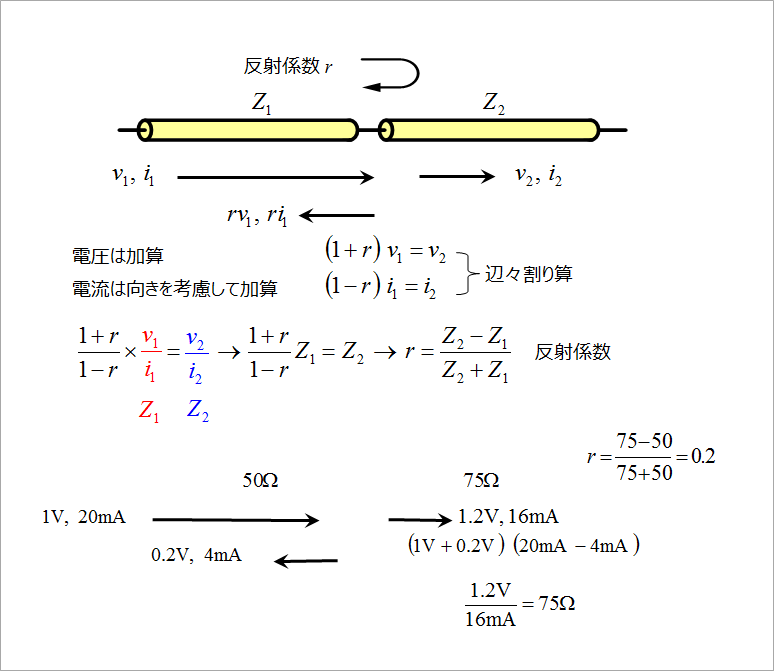The wires through which signals are transmitted are called transmission lines or lines.
A signal travels as a wave on a line. The ratio of the current to the voltage of a wave propagating on a line is constant depending on the line, and this ratio is called the characteristic impedance.
“What is Characteristic Impedance?] Please refer to.
A reflection coefficient is a coefficient that expresses the degree of reflection that occurs at a connection point when lines with different characteristic impedances are connected. Figure 1 shows the principle of how this reflection occurs and the reflection coefficient.

Consider connecting two lines with characteristic impedances Z1 and Z2. Now define the following three waves:
Incident wave: waves v1, i1 traveling toward the connection point
Reflected Waves: Waves rv1, ri1 reflected back at the connection point
Transmitted Waves: Waves v2, i2 traveling through the connection point
Let the voltage and current of the incident wave be v1, i1.
Let r be the reflection coefficient. The r stands for reflection. Since the reflection coefficient r is the ratio of the reflected wave to the incident wave, the reflected wave is expressed as the incident wave x the reflection coefficient. Therefore, the voltage and current of the reflected wave are rv1 and ri1.
Since the voltage is directionless, the voltage just before the connection point is v1+rv1=(1+r)*v1. Since the current has a direction, if the wave traveling to the right is positive, the current just before the connection point is i1-ri1=(1-r)*i1.
Assuming that the wave passing through the connection point, i.e., the transmitted wave, is v2 and i2, the voltage and current immediately before and after the connection point are equal, respectively, so
(1+r)*v1=v2
(1-r)*i1=i2
becomes. Dividing the sides of the above two equations,
(1+r)/(1-r)×v1/i1=v2/i2
Since the ratio of the voltage and current of each line is the characteristic impedance of each line,
v1/i1=Z1, v2/i2=Z2
is represented as If the reflection coefficient r is obtained from the above formula,
r=(Z2-Z1)/(Z2+Z1)
becomes. Z2 can be a line, a resistor, or a capacitor, an inductor, or a combination of these, considering the frequency characteristics.
Figure 1 shows an example calculation of Z1=50Ω and Z2=75Ω. The reflection coefficient in this case is 0.2. As a special example, if Z2=∞, ie open, the reflection coefficient is 1.
Click here for recommended articles/materials
It is a series of columns that start from the basics of the basics, and include themes that you can't hear anymore, themes for beginners, and even a slightly advanced level, and describe them in as easy-to-understand terms as possible.
Maybe there are other themes that interest you!
Check out our other themed columns here.
